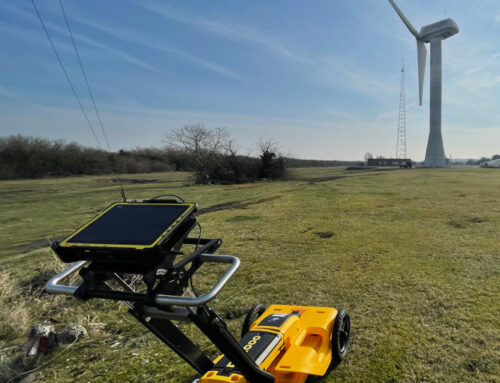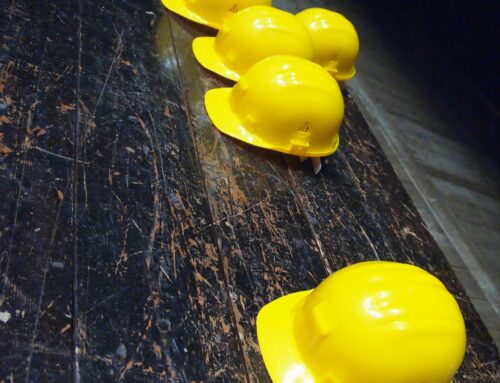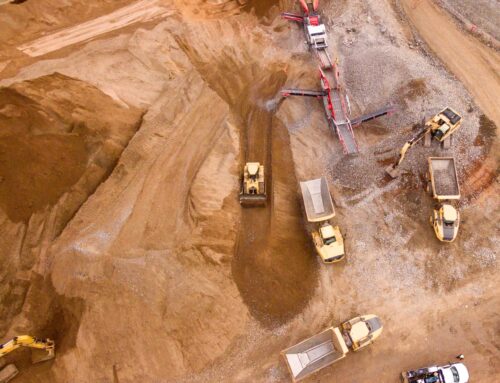Geotechnical Investigations are a necessary part of any construction project. They allow you to assess the stability and strength of soil, as well as determine what materials and depths would be best for building foundations in that particular location.
To conduct these investigations safely, we need detailed information on how deep different types of soils go. So, we drill using a mini borehole rig to carefully place several holes in the area where you plan to build. They are non-invasive and leave hardly a trace that we’ve been there.
Next, samples are sent for testing at a laboratory. Other agencies outsource this facility. But we use our in-house laboratory which keeps the costs and time to our clients down.
It is in fact here where we test for several factors that may influence the foundation design. You then receive a report outlining these findings. Some firms will charge extra for this so beware! However, Your Environment includes this as a package cost.
Types of Geotechnical Investigations
Foundation Investigation
A foundation investigation is a crucial first step to building a home. It’s where a professional attends your site with a small drilling rig and places around 3-5 holes at 5m depth. This is so that soil samples can be taken for analysis on-site. You can expect this to be followed by an examination of the composition of the soil by our lab team. It’s a key stage in determining what foundation will suit your build needs most effectively.
Contrary to belief, it is a minimally invasive operation conducted by trained professionals. That means you’ll be left with a tidy site that’s safe for your project.
Do you need a Foundation Investigation?
You don’t need a structural or civil engineer to build a solid foundation for your project. But, if you want to avoid delays further down the line, you do need a foundation investigation. In fact, your building inspector will likely request that one takes place.
It’s much better to do the groundwork up front than have to deal with unnecessary costs later on. Imagine the delay to your project when the building inspector inspects your dug foundations and wants a soil investigation!
Things to look out for when choosing a firm to conduct a foundation investigation:
Before selecting a company to complete a foundation investigation for your project, make sure you know the answers to these questions:
- Do they design reports that you can give them directly to your builder?
- Will you be expected to spend money on concrete you don’t need?
- Will you be charged for wasted soil disposal?
- How quick are results produced and a report turned around?
- Are they fully insured to conduct every stage?
Getting the answers to these questions upfront will help you to avoid any nasty surprises.
Infiltration or Soakaway testing
Infiltration or Soakaway Testing is a fuss-free method of calculating the infiltration rate for the design of soakaways and drainage fields.
Soakaway Testing involves the use of an excavator or handheld equipment to dig a hole. That hole is then filled with water. After that, the rate at which the water soaks away is calculated. This is where the infiltration rate comes from.
It doesn’t matter whether the surface is grass, block paving, tarmac or concrete. This method can be used on any of the surfaces mentioned.
Things to look out for when choosing a firm for Infiltration or Soakaway testing
- Does it conform to BRE365 standard?
- Do they complete Soakaway testing for SuDS or micro drainage design?
- Are the reports they produce easy-to-understand and jargon-free?
- Can you submit the report to your Local Authority planners?
With a reputable company, you should receive a full set of calculations and the calculated infiltration rate. With Your Environment, we provide you with detailed geotechnical logs. These are actually required to meet the BRE365 standard.
CBR and Plate Testing
CBR and Plate Testing are methods of load-bearing testing for cranes, piling mats and road construction. More specifically, CBR testing stands for California Bearing Ratio.
These methods test the soils or just underneath the surface of a site where construction is due to take place.
The purpose of a plate-bearing test is exactly how it sounds – to work out how much weight the ground can take. From the outcome of that test, you can work out the safe bearing capacity of an area.
This testing is also used to work out the formation level of roads and pavements. We can save your project the expense of muck away.
Usually, an excavator is used for a plate load test. But some firms, such as Your Environment, also use handheld testing equipment.
This gives you the option to design the formation level of pavements and roads on your site.
Things to look out for when choosing a firm for CBR and Plate testing
- Do they work to British Standards?
- How much value for money do they provide?
- Can they conduct tests for different surfaces?
- Do they perform hand-held equipment tests?
- Will you receive the required reporting for crane and piling companies?
- How much guidance will you receive if you are unfamiliar with the process?
- What insurance do they have?
It’s important to get the answers to the above questions and ensure you choose a company that has extensive experience and can give you peace of mind.
Summary
Geotechnical investigations are designed to give specialist insight into your foundations. At Your Environment, we undertake all the methods mentioned above. Plus, geotechnical investigations we conduct is on a low-cost, fixed fee basis to make your project as cost-effective as possible.
But, if you’re not sure which service you need, we’re happy to provide you with advice or help with any queries you may have.




